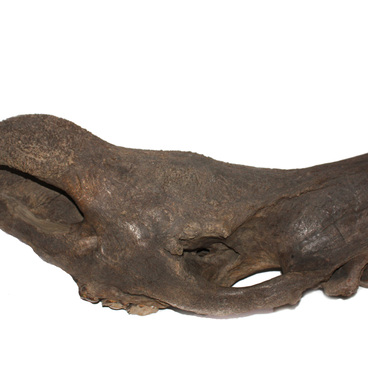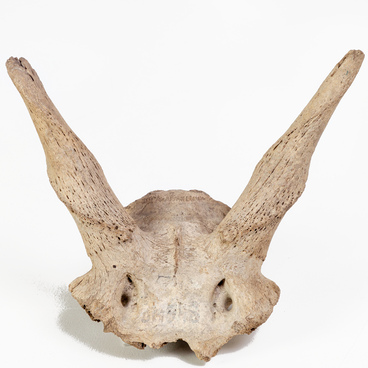The bony remains of primitive bison first appear in Late Pliocene sediments approximately one and a half million years before the present day. Appearing first in the Black Sea Region, bison quickly settled the expanses of Siberia, and about 500 thousand years ago, penetrated from Asia to North America through Beringia. Primitive bison lived mainly in the steppes. These were the real masters of the plains. The bison could reach 2 meters in height, and its weight exceeded 2.5 tons. The head of the bison was crowned on both sides by huge, slightly curved up horns, the length of which was half a meter, and the distance between the tips was 1 meter. The animal was covered with long hair, which gave reliable protection from frost and wind. A large body weight also helped to endure the harsh climate of the Ice Age. The bison had virtually no enemies. None of the predator, with the exception of saber-toothed tigers, did not venture alone to attack such a giant.
Huge herds roamed from the British Isles to Kamchatka, and from China to Taimyr. However, at the end of the Pleistocene, i.e. about 10,000 years ago, bison in Eurasia began to die out. They ground up and adapted to living in forests. Two separate populations of forest bison were formed, namely: the plain, or Belovezha, and the mountain, the so-called Caucasian. Steppe bison continued to live on the vast Russian plain, in Southern Siberia, and the Baikal Region. Primitive people actively hunted these animals and often depicted them on the walls of caves. Many bison bones are found in the Paleolithic sites of the Russian plain and the Ciscaucasia. Bison fossils are found everywhere in Buryatia.
Given the fact that bison disappeared in the snow-covered tundra and taiga of Eastern Europe and Siberia, then in the prairies of North America, the descendants of bison have survived to the present time. The modern descendant of the ancient bison is more massive than the bison. The sense of smell was best developed. Bison can smell from 7 to 8 km away. Hearing and vision are somewhat less developed. Despite their powerful build, bison are exceptionally fast and agile. They can reach speeds of up to 50 km/h and run about 8 km, while a horse with a rider can only run at this speed for one kilometer.
Huge herds roamed from the British Isles to Kamchatka, and from China to Taimyr. However, at the end of the Pleistocene, i.e. about 10,000 years ago, bison in Eurasia began to die out. They ground up and adapted to living in forests. Two separate populations of forest bison were formed, namely: the plain, or Belovezha, and the mountain, the so-called Caucasian. Steppe bison continued to live on the vast Russian plain, in Southern Siberia, and the Baikal Region. Primitive people actively hunted these animals and often depicted them on the walls of caves. Many bison bones are found in the Paleolithic sites of the Russian plain and the Ciscaucasia. Bison fossils are found everywhere in Buryatia.
Given the fact that bison disappeared in the snow-covered tundra and taiga of Eastern Europe and Siberia, then in the prairies of North America, the descendants of bison have survived to the present time. The modern descendant of the ancient bison is more massive than the bison. The sense of smell was best developed. Bison can smell from 7 to 8 km away. Hearing and vision are somewhat less developed. Despite their powerful build, bison are exceptionally fast and agile. They can reach speeds of up to 50 km/h and run about 8 km, while a horse with a rider can only run at this speed for one kilometer.


